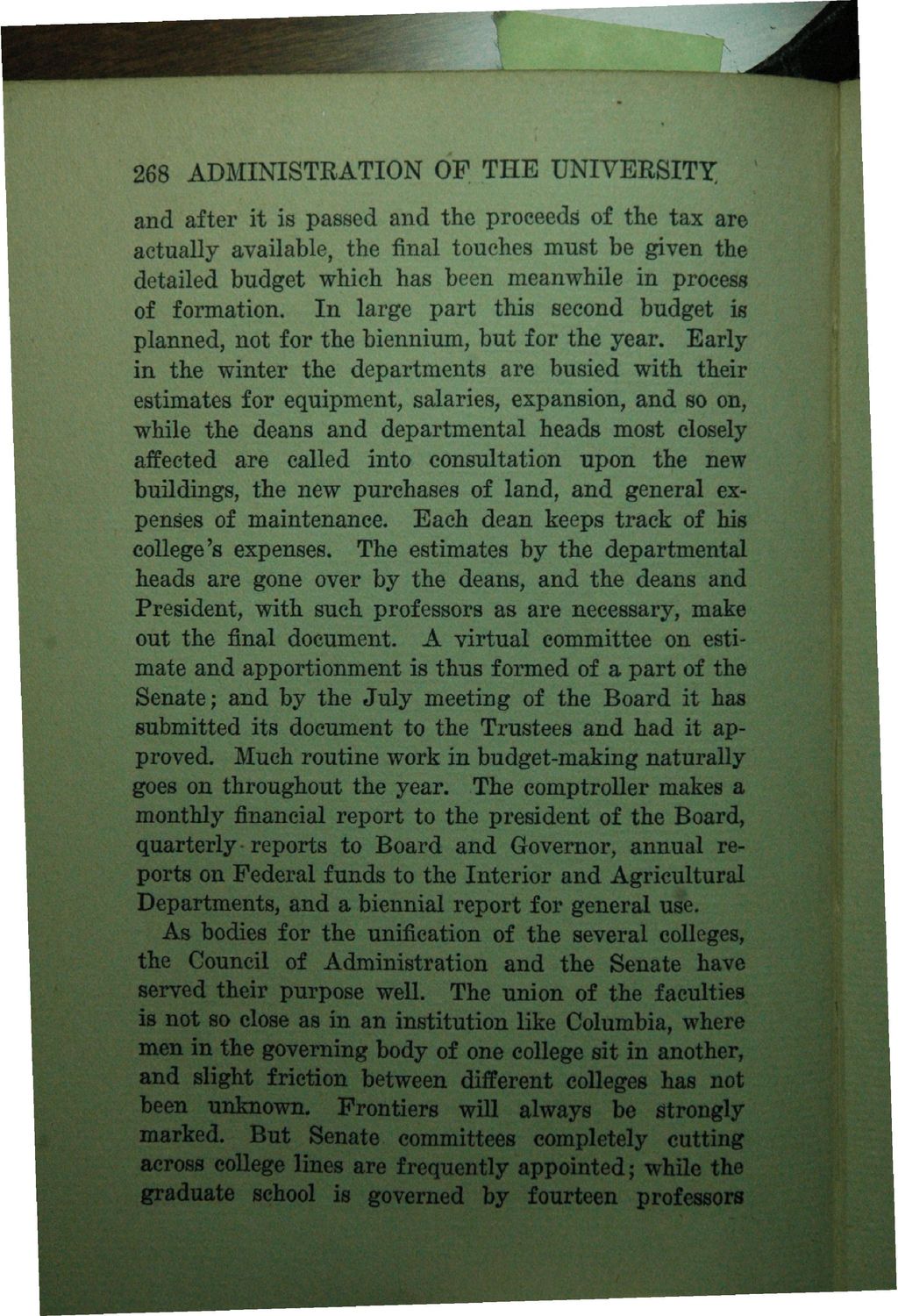| |
| |
Caption: Book - History of the University (Nevins)
This is a reduced-resolution page image for fast online browsing.

EXTRACTED TEXT FROM PAGE:
f 268 ADMINISTRATION OF THE UNIVERSITY and after it is passed and the proceeds of the tax are actually available, the final touches must be given the detailed budget which has been meanwhile in process of formation. In large part this second budget is planned, not for the biennium, but for the year. Early in the winter the departments are busied with their estimates for equipment, salaries, expansion, and so on, while the deans and departmental heads most closely affected are called into consultation upon the new buildings, the new purchases of land, and general expenses of maintenance. Each dean keeps track of his college's expenses. The estimates by the departmental heads are gone over by the deans, and the deans and President, with such professors as are necessary, make out the final document. A virtual committee on estimate and apportionment is thus formed of a part of the Senate; and by the July meeting of the Board it has submitted its document to the Trustees and had it approved. Much routine work in budget-making naturally goes on throughout the year. The comptroller makes a monthly financial report to the president of the Board, quarterly-reports to Board and Governor, annual reports on Federal funds to the Interior and Agricultural Departments, and a biennial report for general use. As bodies for the unification of the several colleges, the Council of Administration and the Senate have served their purpose well. The union of the faculties is not so close as in an institution like Columbia, where men in the governing body of one college sit in another, and slight friction between different colleges has not been unknown. Frontiers will always be strongly marked. But Senate committees completely cutting across college lines are frequently appointed; while the graduate school is governed by fourteen professors
| |